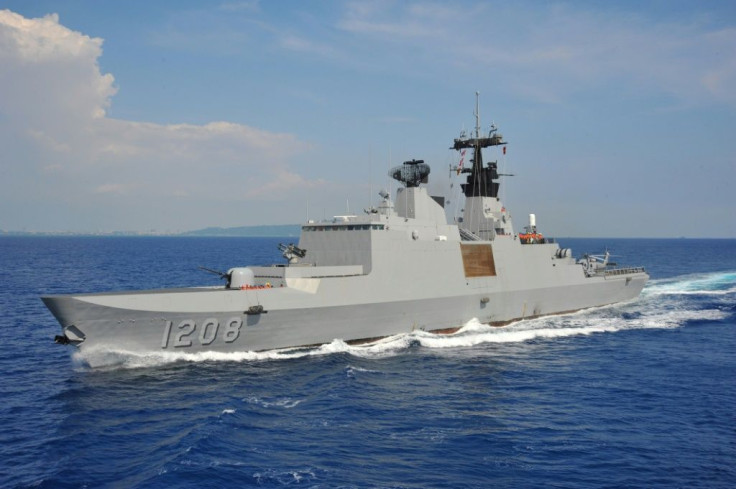South China Sea Dispute: Taiwan To Commission New Patrol Vessel, Make Advanced Jets

Taiwan is taking two big steps to strengthen the island’s presence in the South China Sea. The first is to commission its first 4,000-tonne coastguard offshore patrol vessel. The second step is to begin the production of an advanced jet training (AJT) plane. Officials and experts said Monday (June 1) that if needed, the air and sea crafts can be converted into defense systems during wartime to safeguard the island.
That “wartime” would likely pit the island nation against China, a formidable opponent that could easily overwhelm Taiwan if not for the probable support it would get from the U.S.
It is no secret that Beijing is seeking reunification with Taiwan under a policy called the one-China principle, presumably under the Chinese Communist rule. Taiwan has different ideas for its future under current President Tsai Ing-wen. She was elected as a member of the independence-leaning Democratic Progressive Party in 2016 and won a second term in January with a landslide victory.
Her May 20 inauguration speech included a vow to bolster the island’s defense because of the growing military threat from Beijing. To China, Taiwan is a wayward province that must be returned to the mainland using force if necessary. Tsai’s refusal to accept the one-China idea has prompted Beijing to carry out a series of war games. They have also meddled with several of Taiwan’s allies to side with Beijing in an activity described as “poaching.”
Taiwan will also be building up its coastal defenses with missiles purchased from the U.S. According to Deputy Defense Minister Chang Che-ping, the projectiles are land-based AGM-84 Harpoon anti-ship missiles that they hope to acquire by 2023.
The ship is one of four National Coastguard Administration’s CG-160 4,000-tonnage-class patrol vessels ordered from Taiwan’s CSBC Corporation, formerly known as China Shipbuilding Corporation. In 2008, the company was run by the state before it converted to a private business.
Tuesday’s launch will be part of a ceremony held at CSBC in the southern port city of Kaohsiung, according to Wei Cheng-tzu, executive vice-president of CBSC. The other three ships are expected to be delivered by 2025.
“After the ship is launched, we will conduct various kinds of tests of the vessel’s facilities and equipment before delivering it over to the National Coastguard Administration by the end of this year,” Wei told South China Morning Post.
The builder of the AJTs, named Yung Yin, or Brave Eagle, is Aerospace Industrial Development Corporation (AIDC). Its chairman, Hu Kai-hung said, “According to the schedule, we are to deliver 66 Yung Yins to the air force by June 2026.” Production of the AJTs is scheduled to begin in 2021.
Su Tzu-yun, a research fellow at the military-affiliated Institute for National Defense and Security Research, told South China Morning Post, “Once it is loaded with missiles and bombs, Yung Yin, which in normal times trains air force pilots, can be used in a war.”
© Copyright IBTimes 2024. All rights reserved.





















